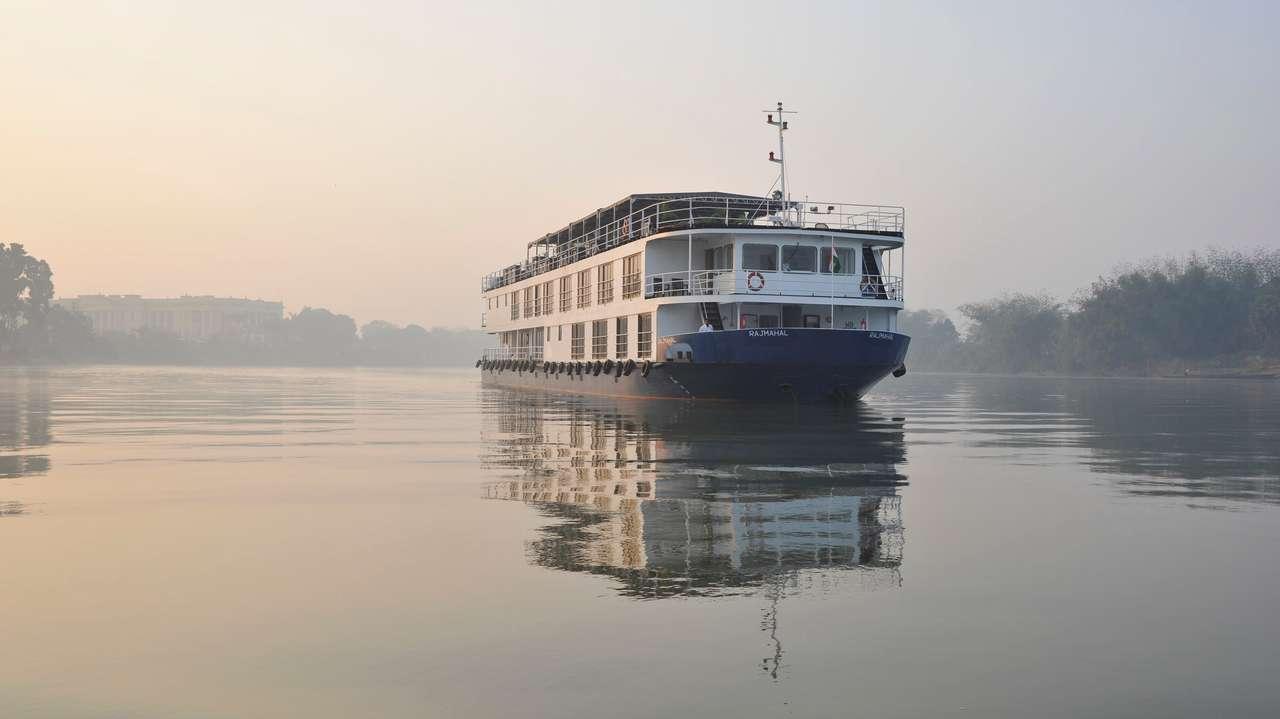
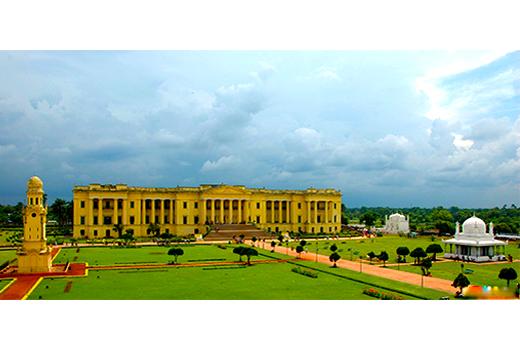
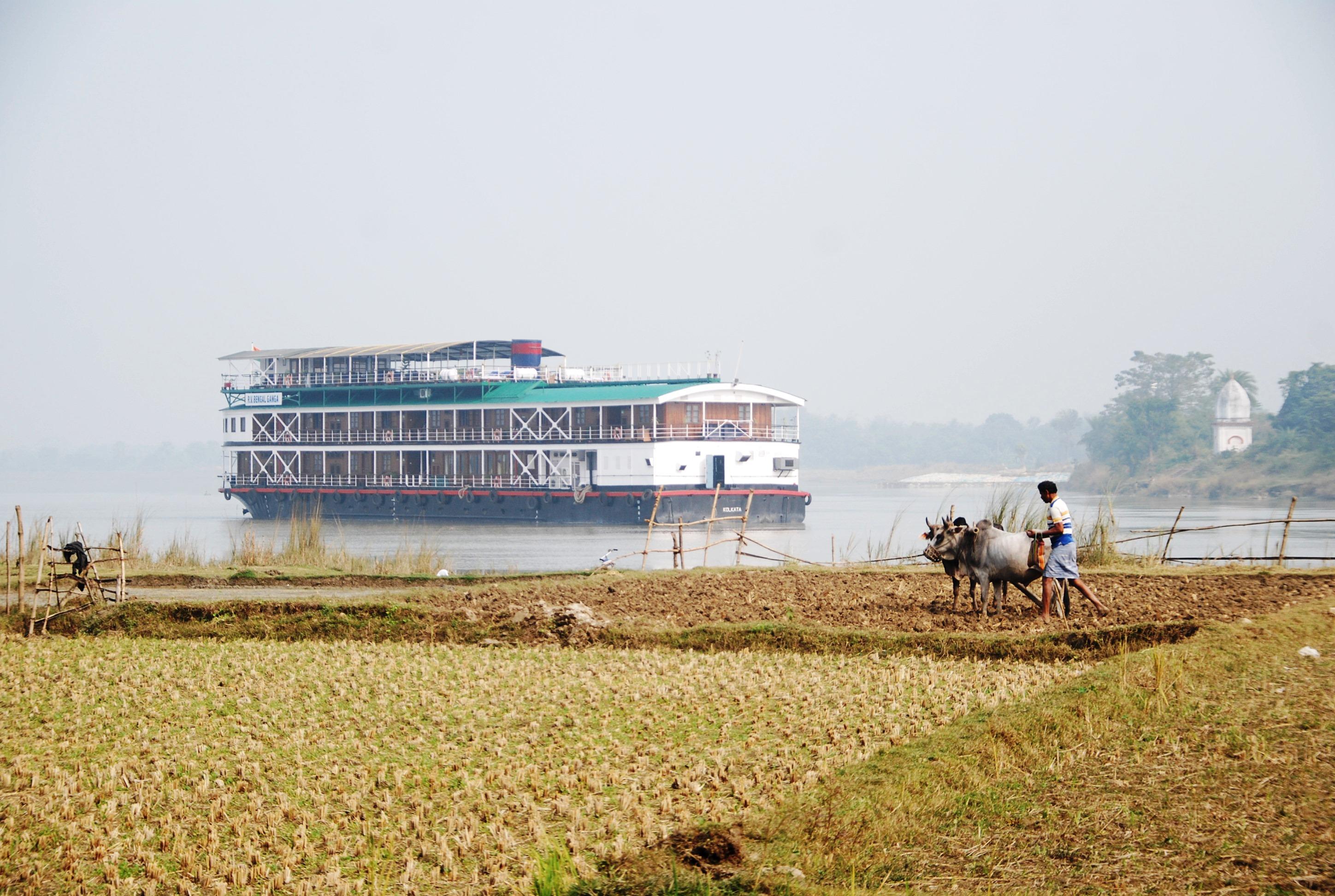
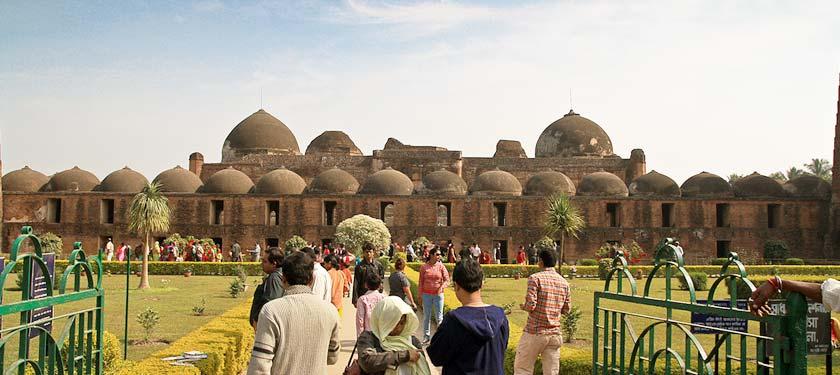
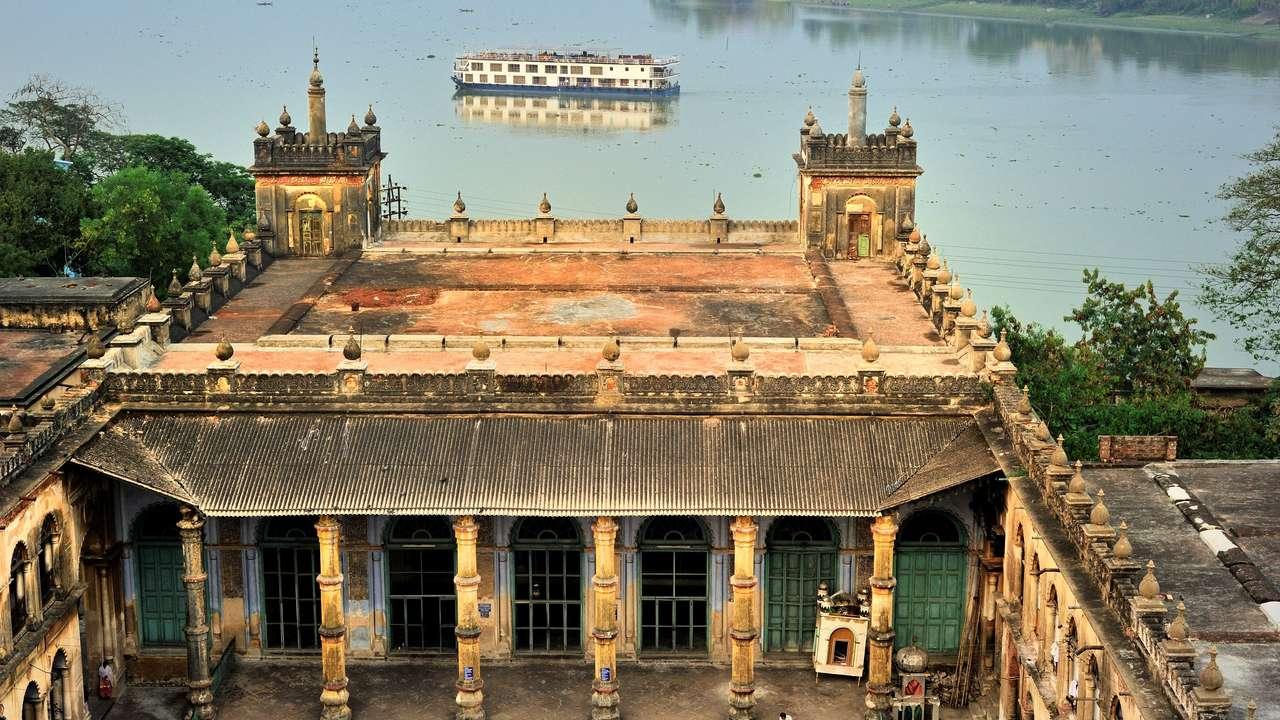
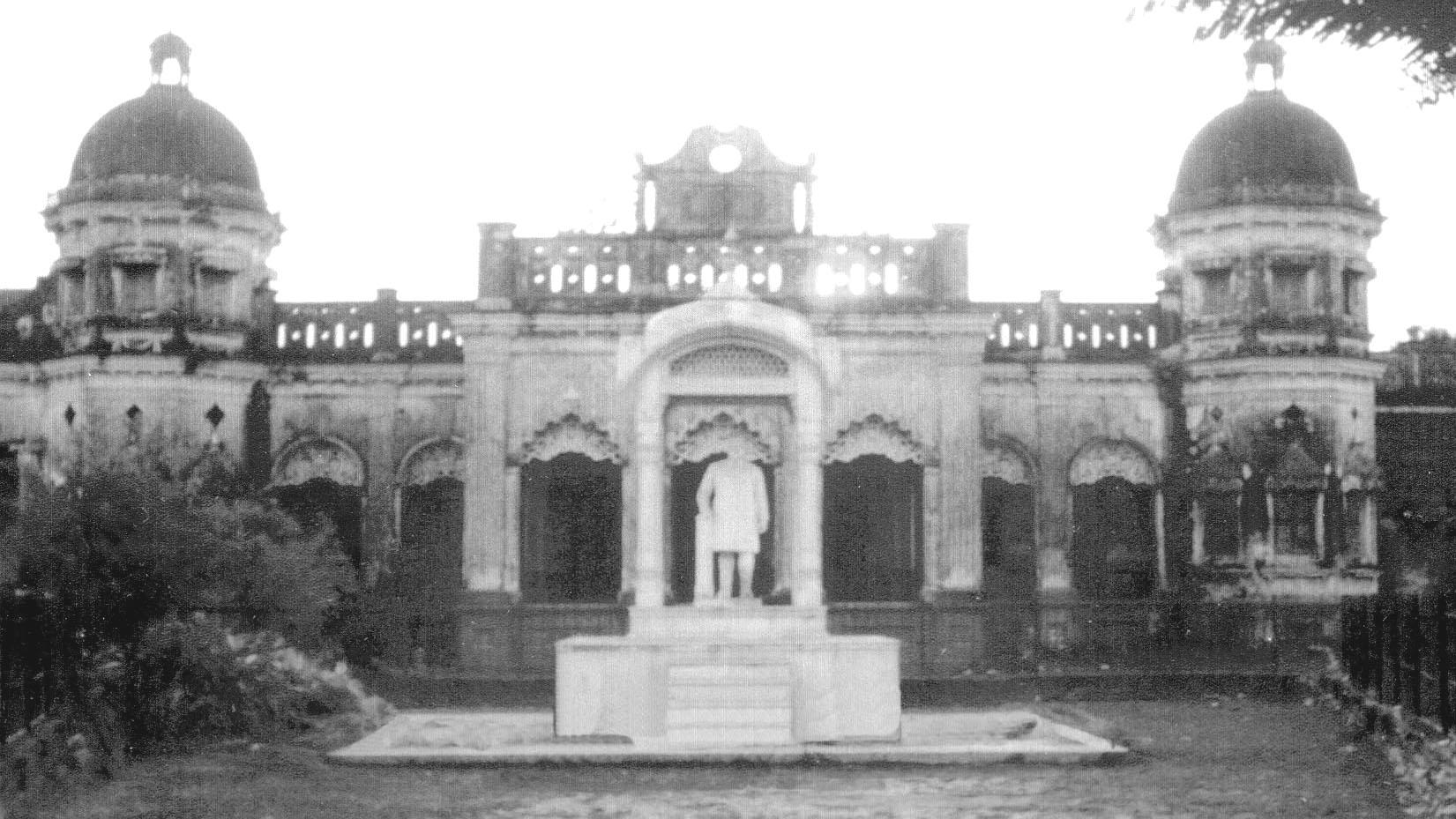
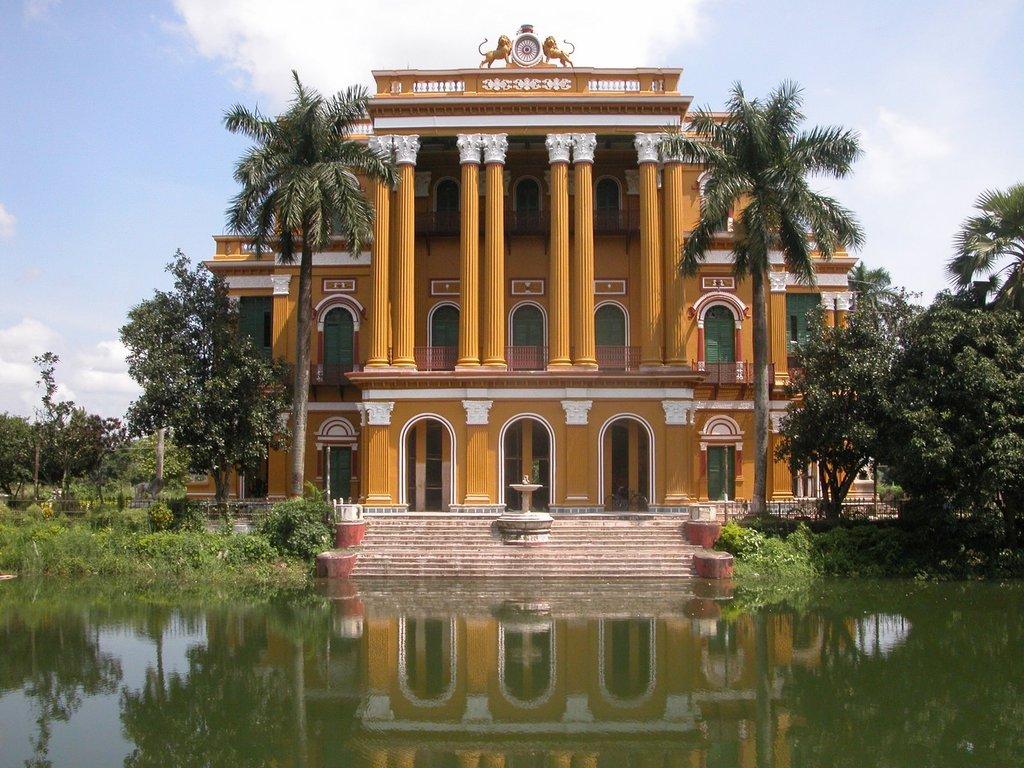
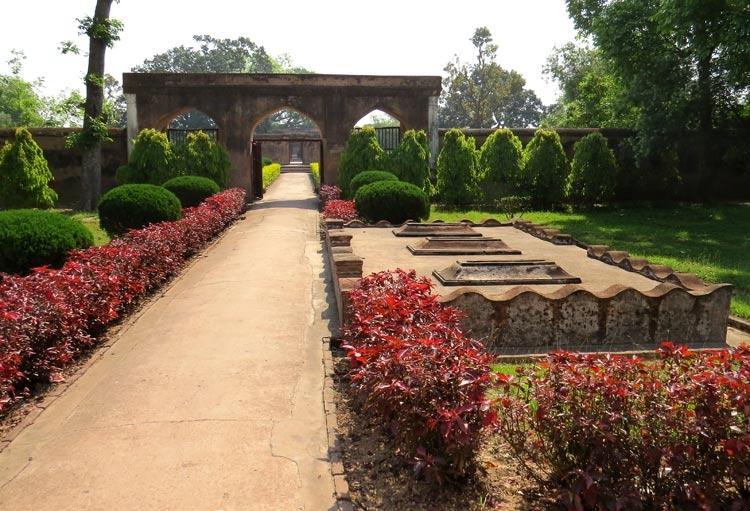
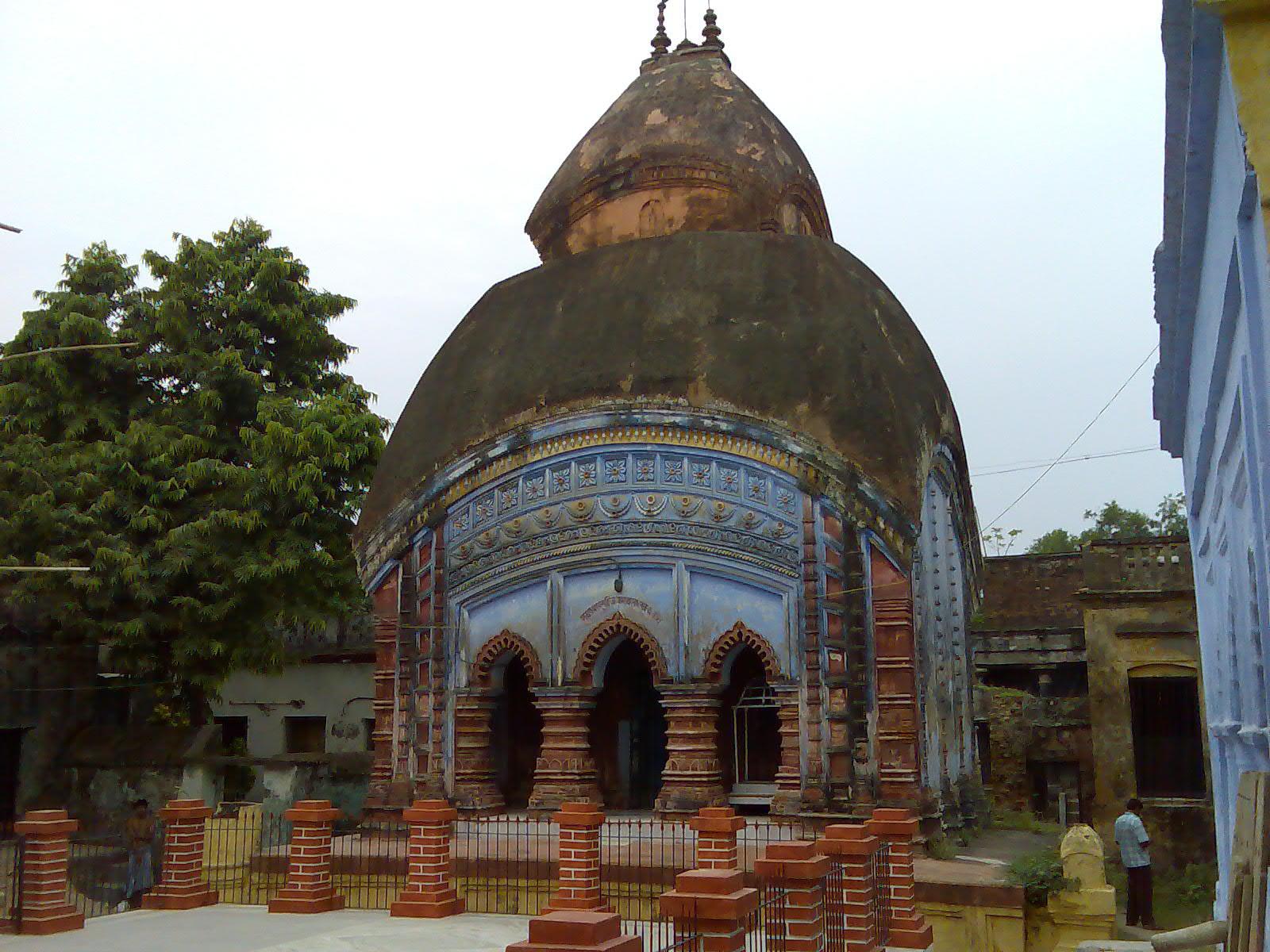
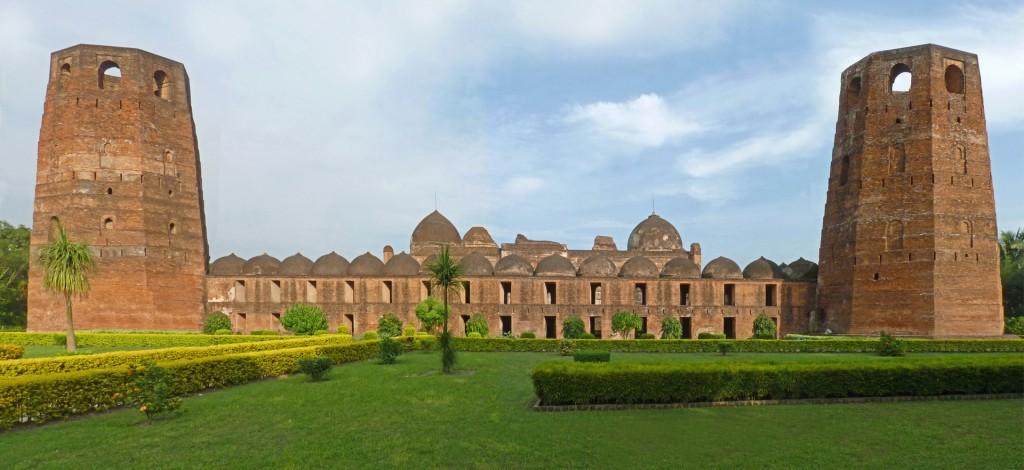
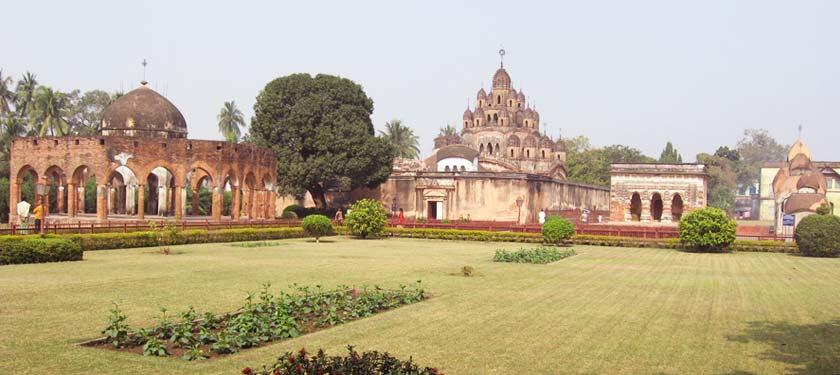
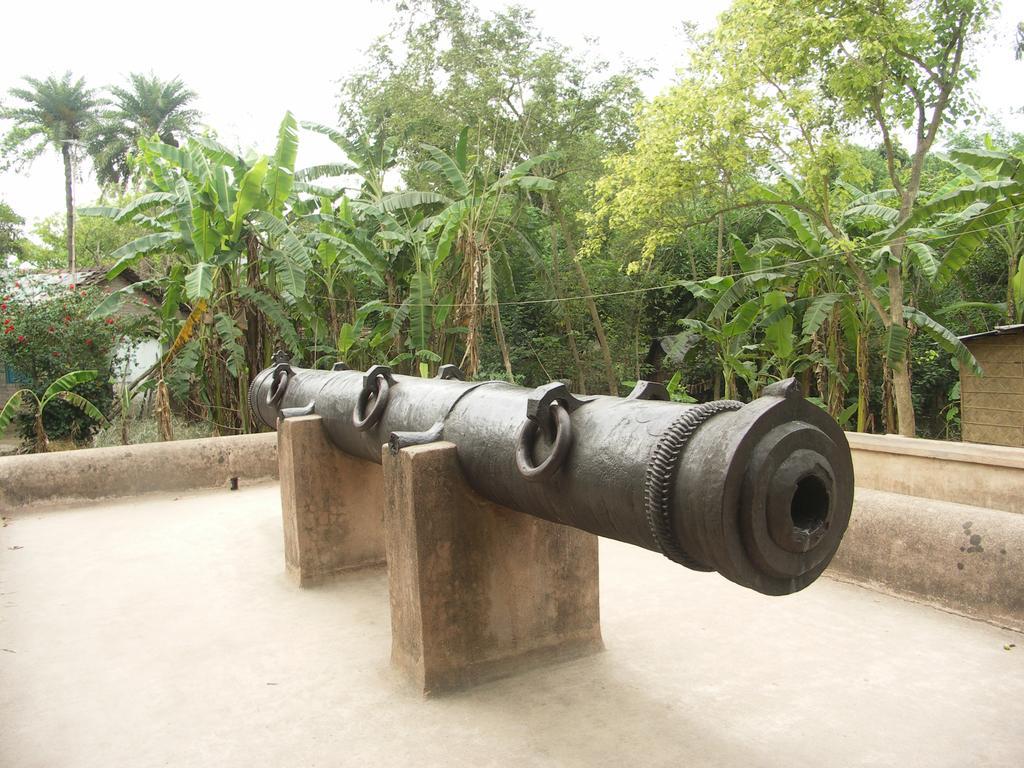
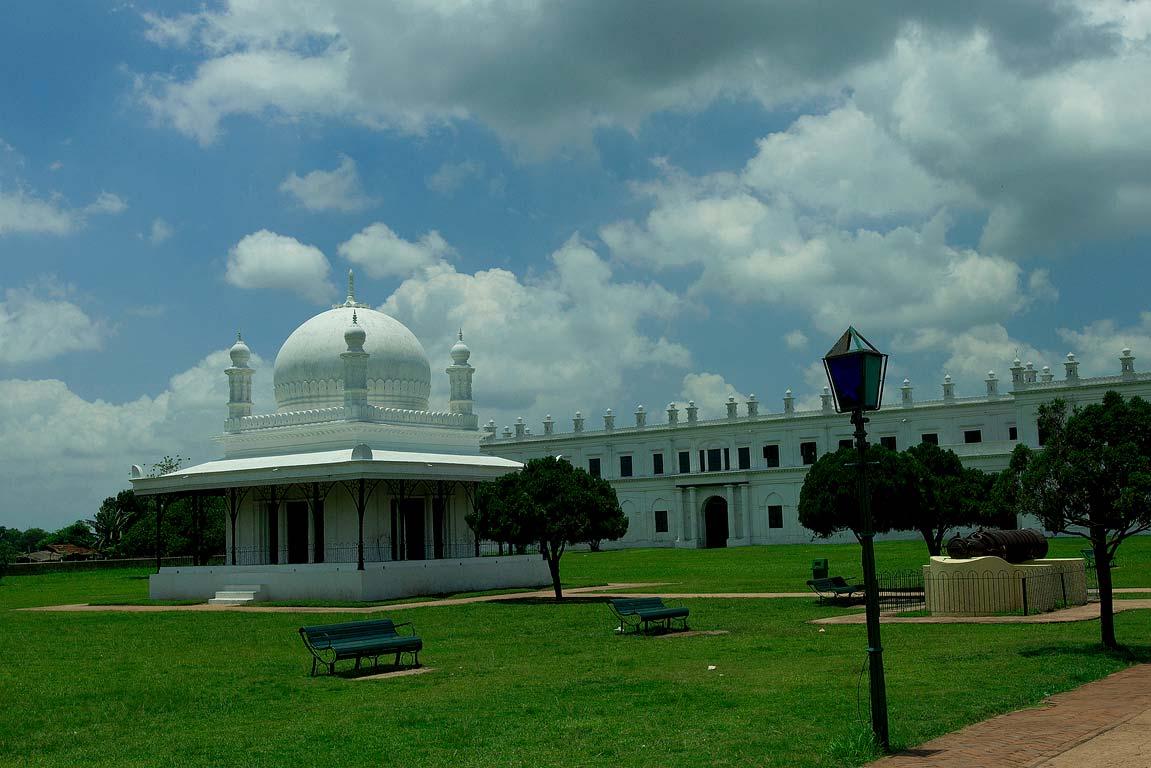

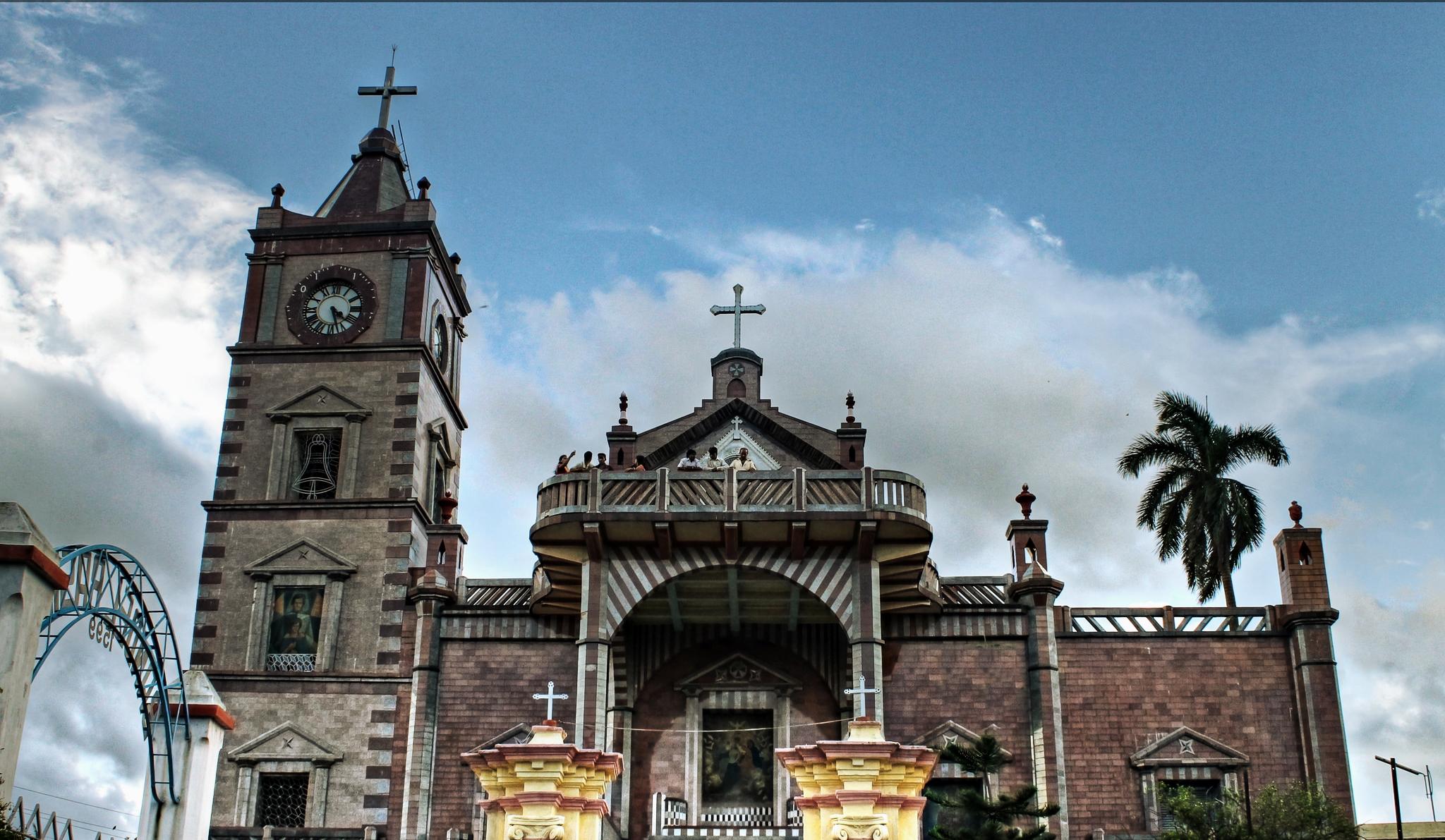
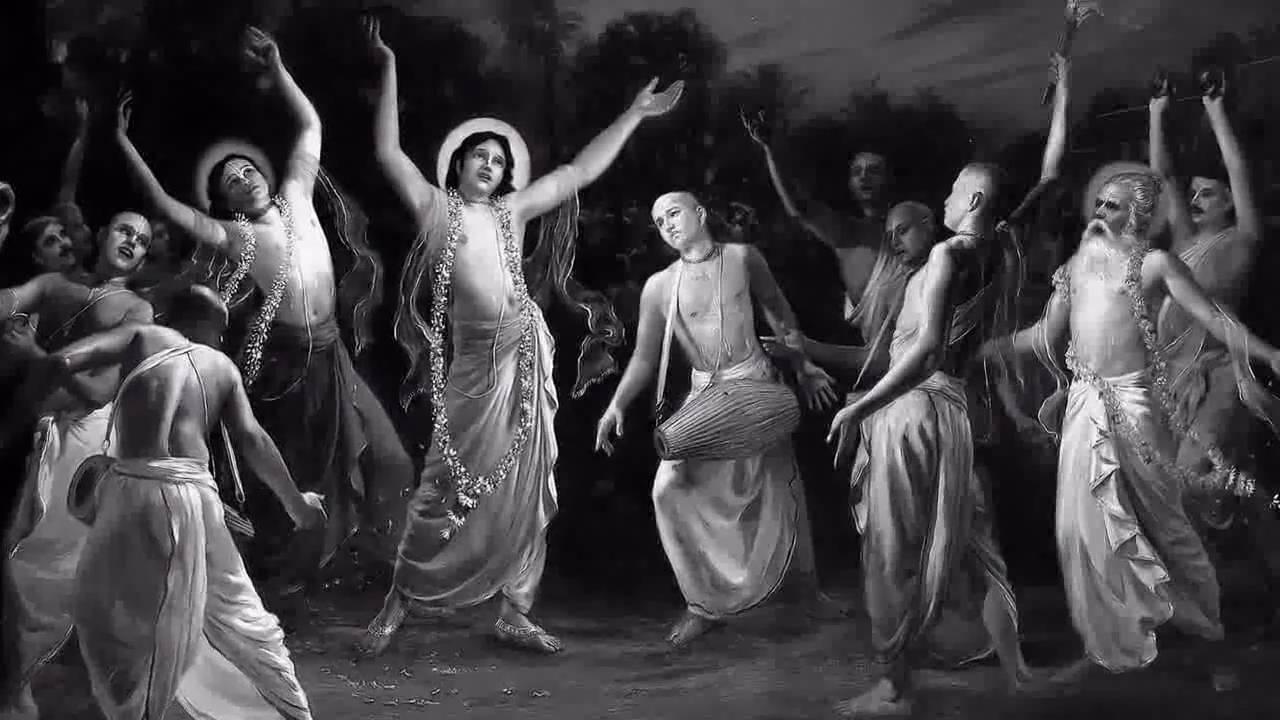
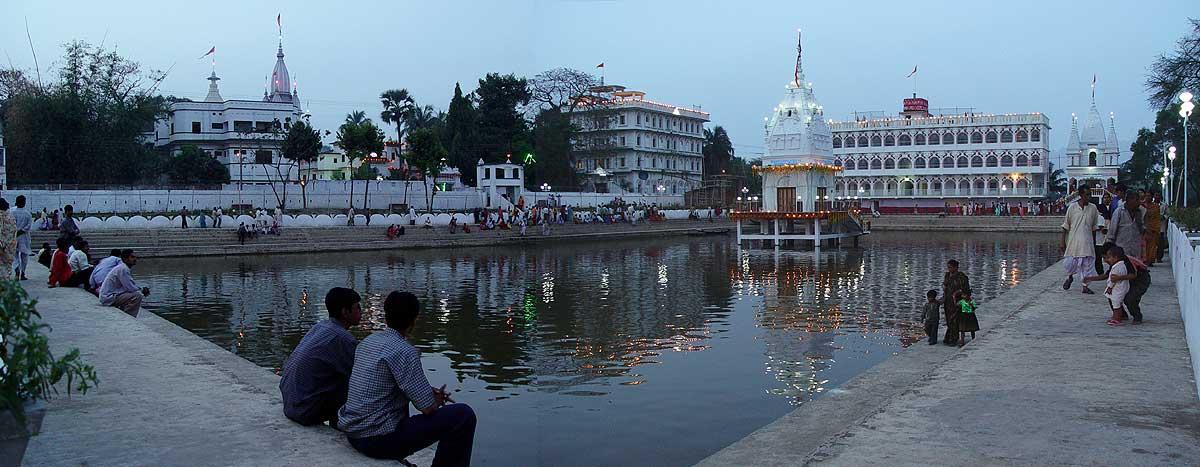
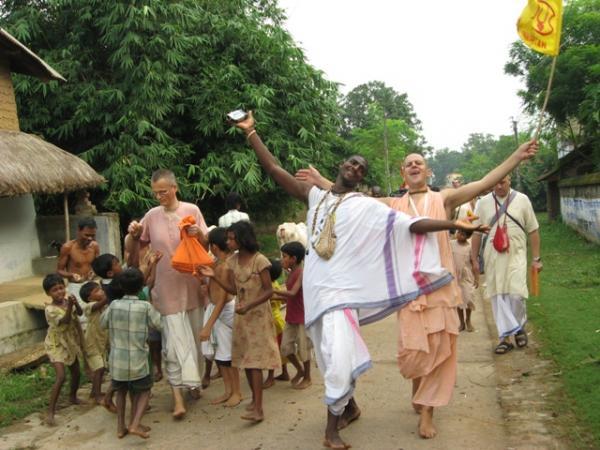
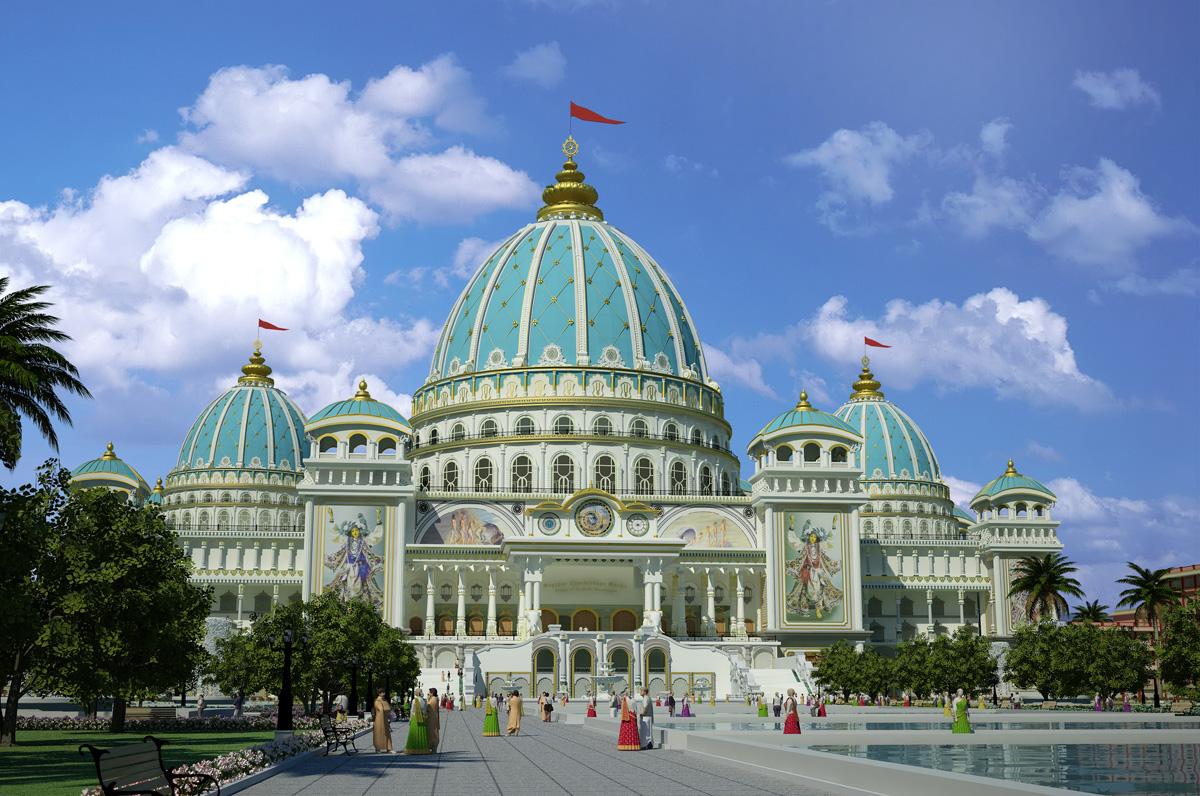
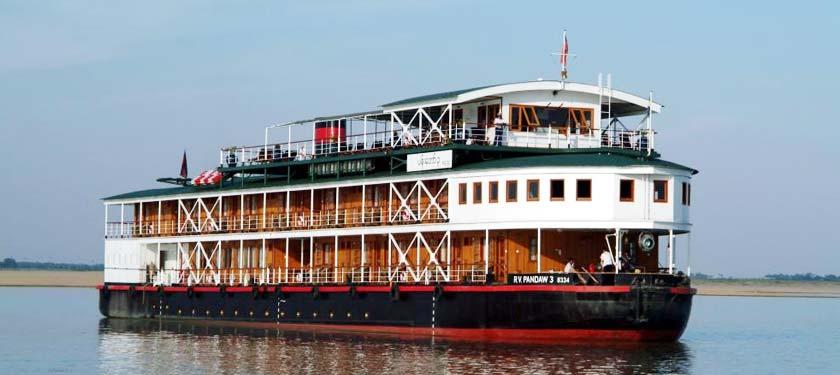
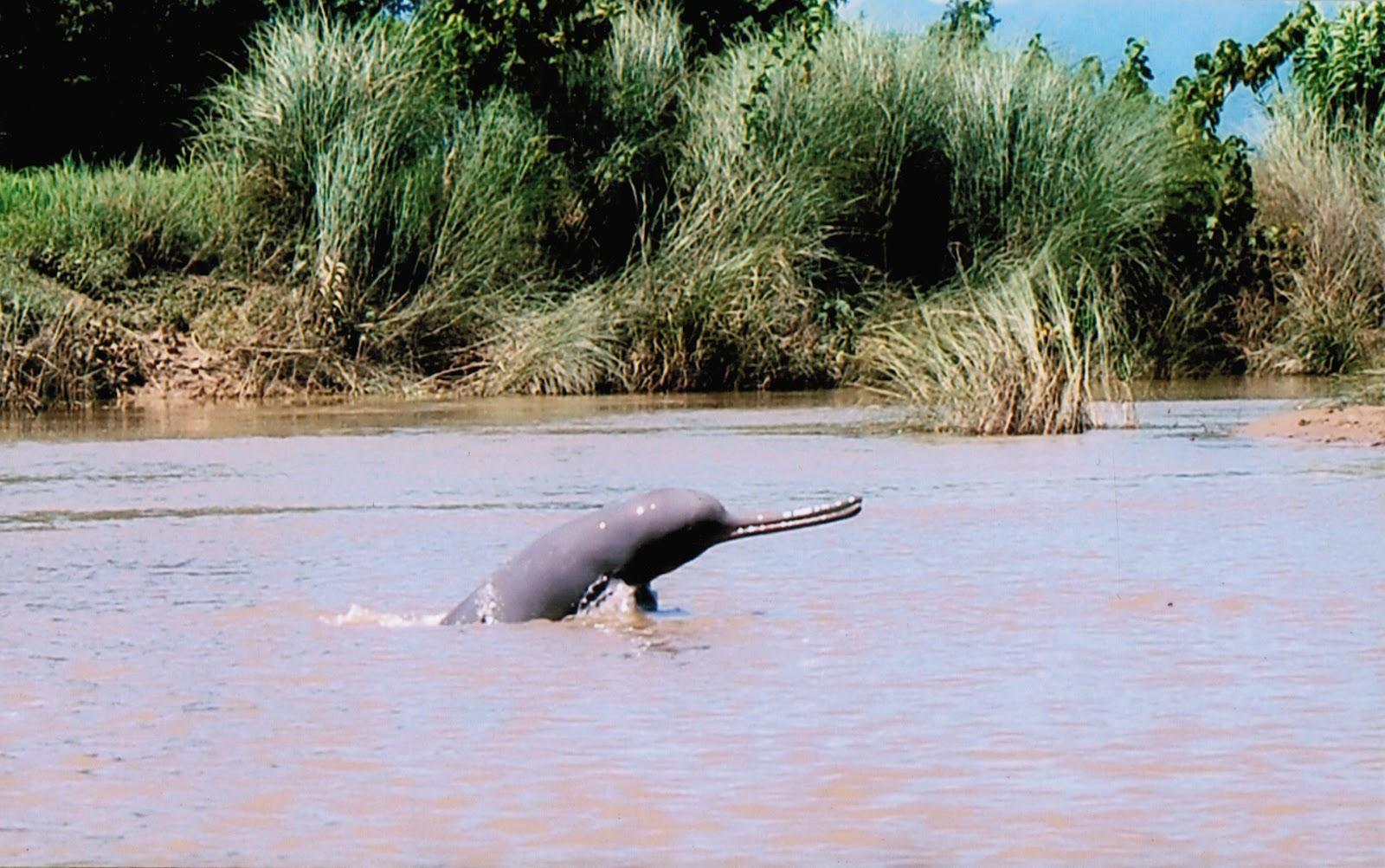
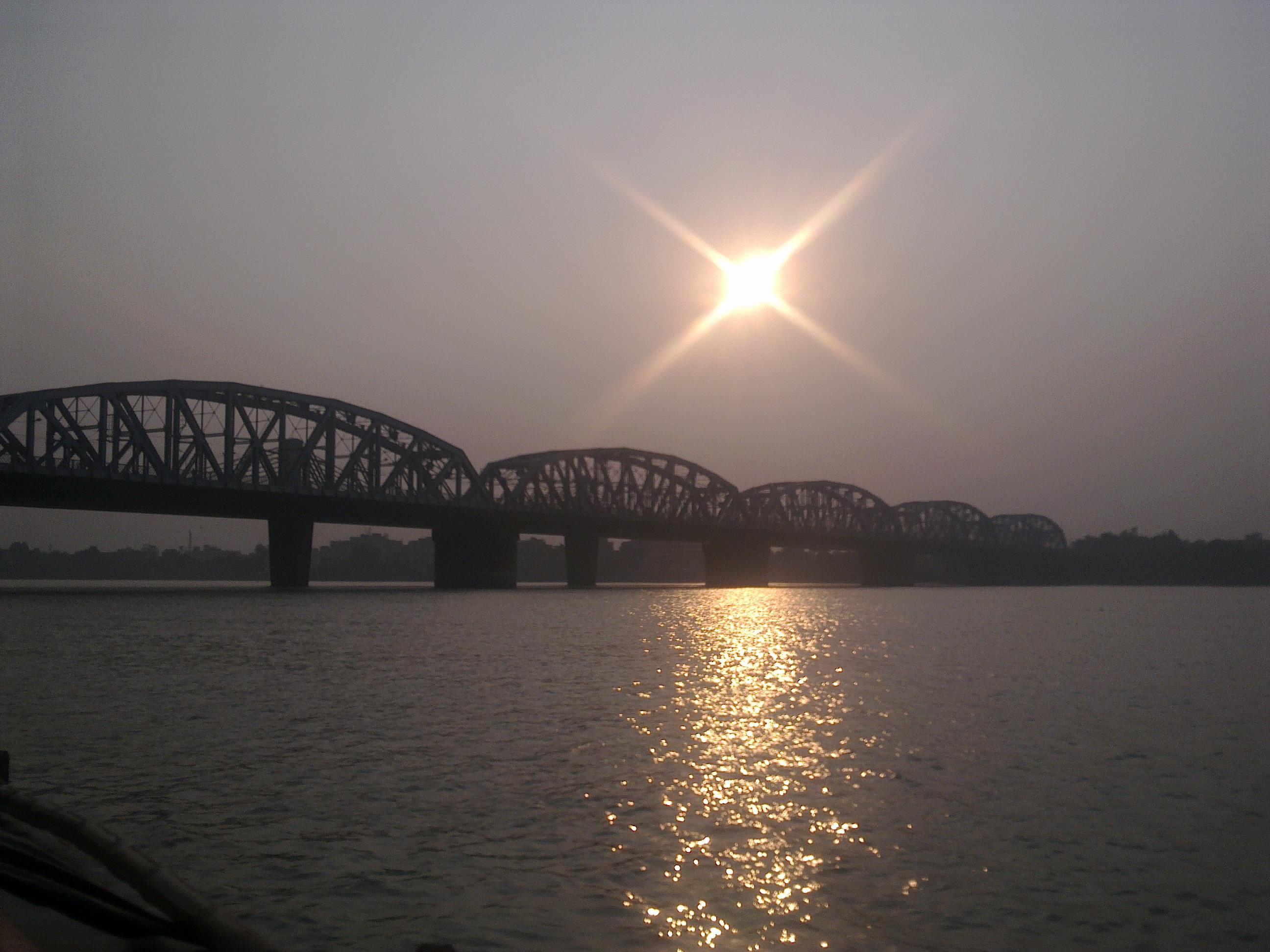
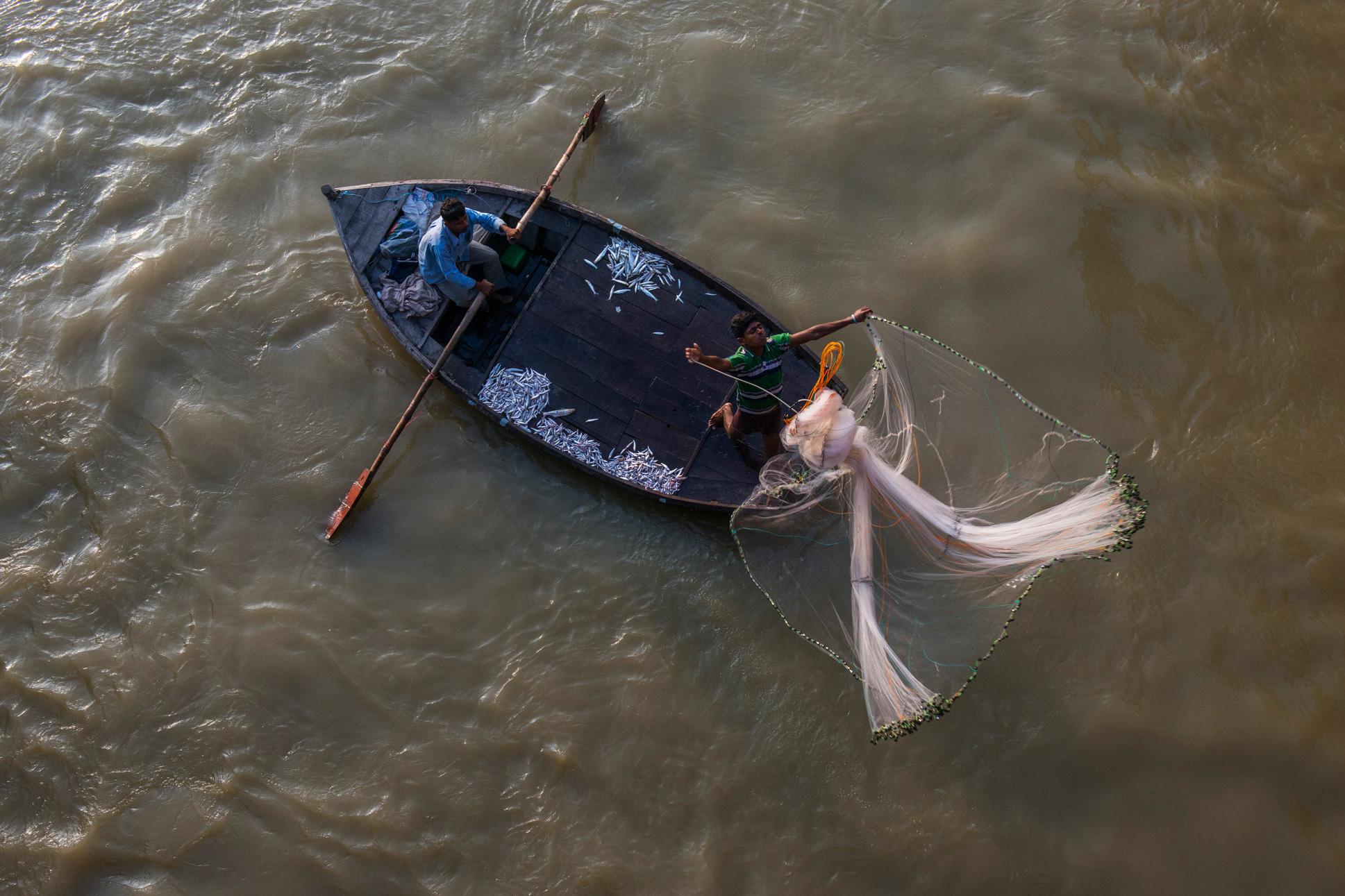
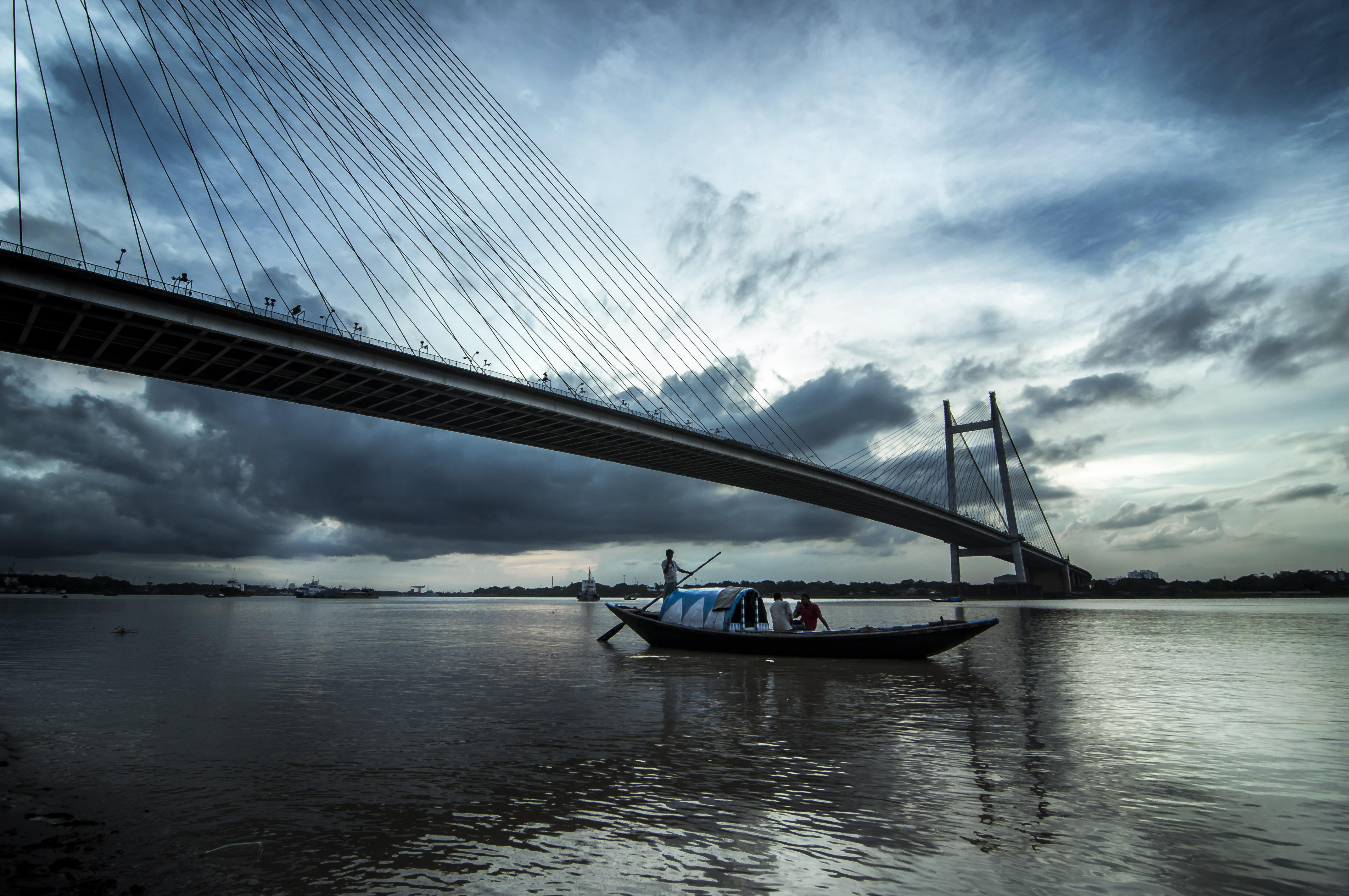
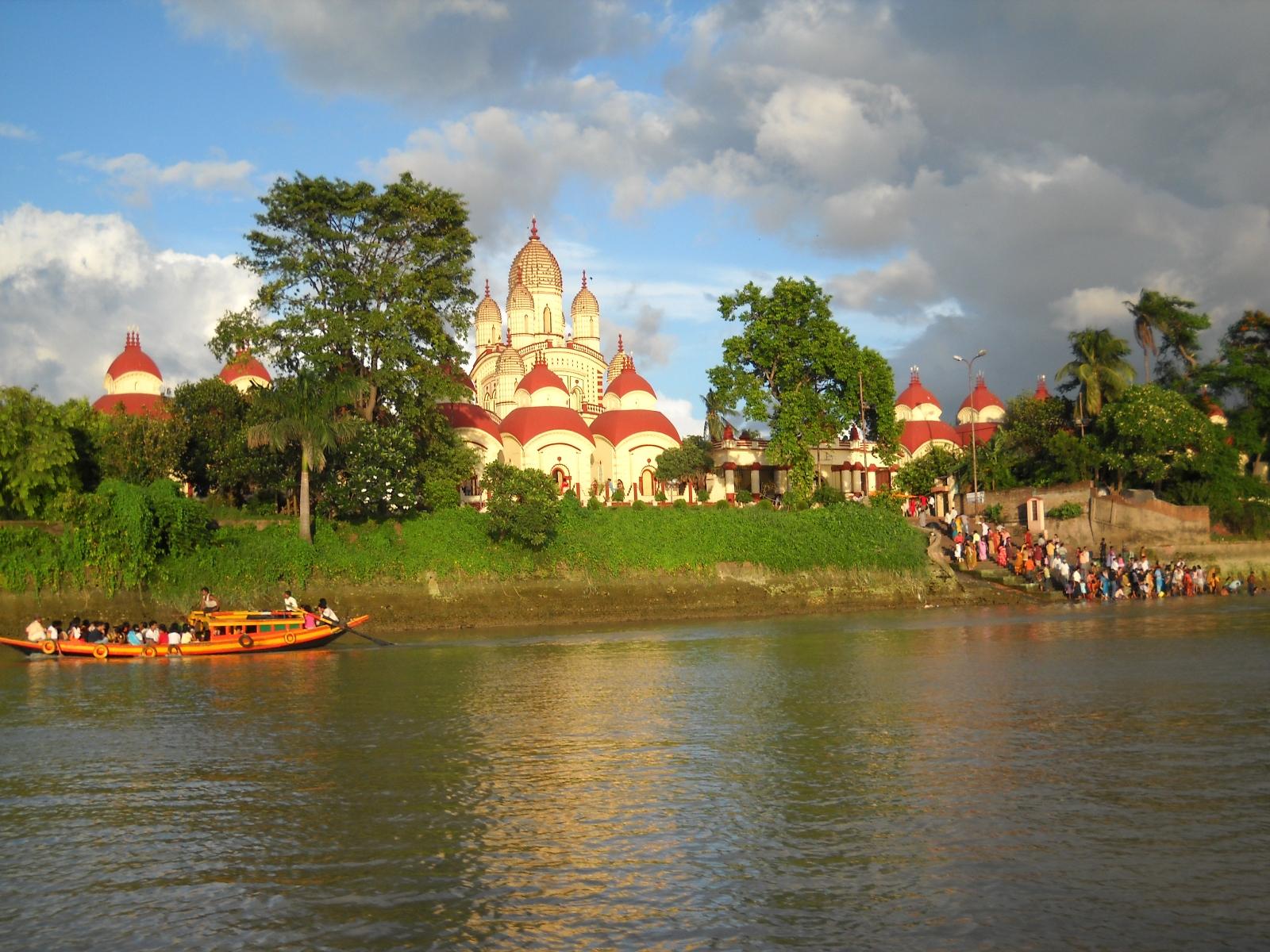
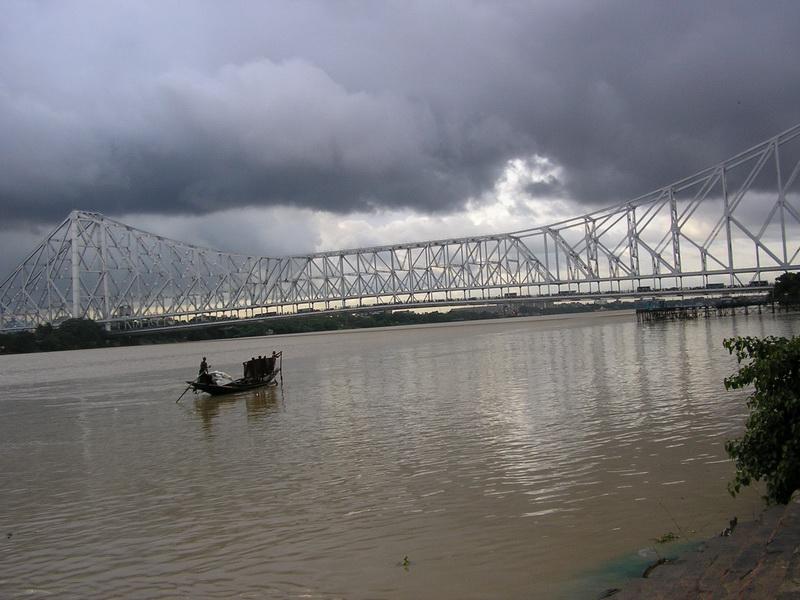
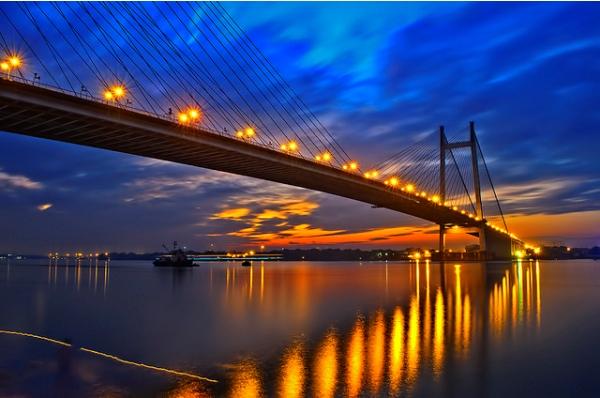
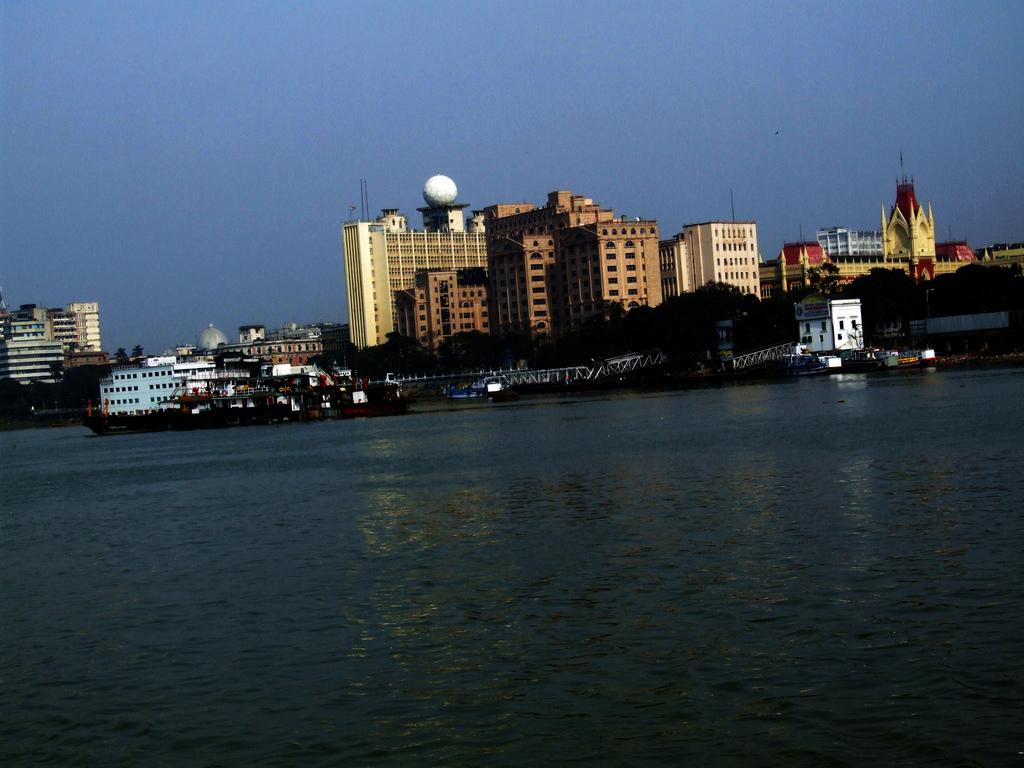
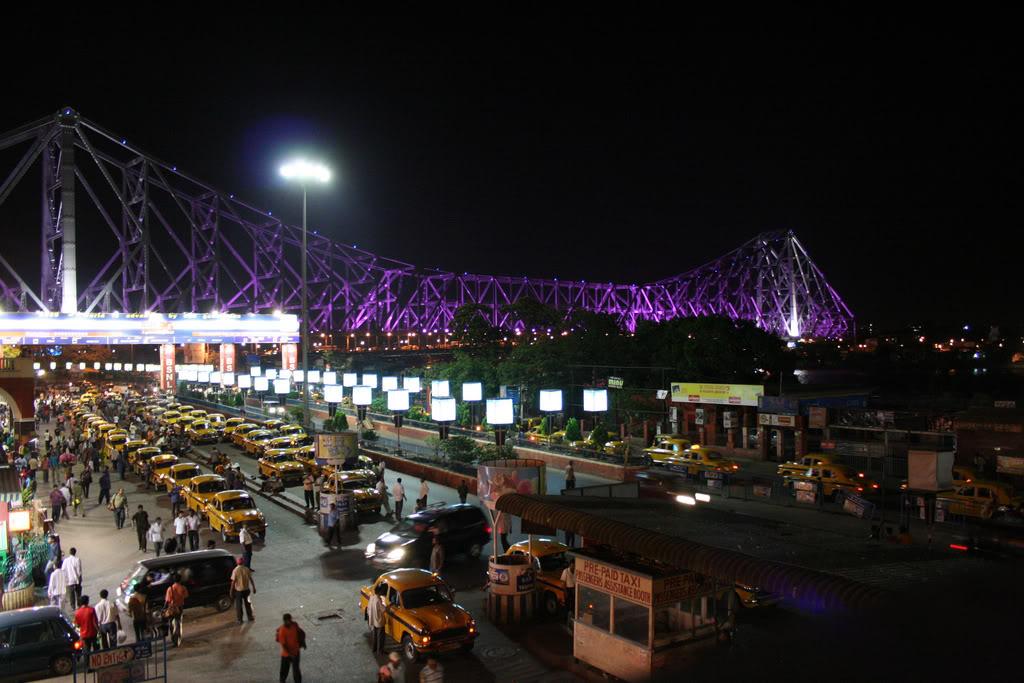
All the visitors and most of the crew are on the front deck for a grand entrance into the city. Calcutta casts its spell with its disarming Ghats and derelict mansions. We bet you will see it in the way everyone jostles for the sweet spot at the bow. Looming ahead is Howrah Bridge, the oldest and grandest of the three bridges set across the river at Calcutta. A crowd of pedestrians might gather on the bridge to see you through. Wild mutual cheering will follow as you pass under. You will moor just south of Howrah Bridge at dusk, exactly as promised. Homeward bound that will be and in the end the predominant memory you will carry home is that of the intricate terracotta at Kalna, Nawabi Murshidabad, and certainly the colonial past scattered along the shores from Bandel to Calcutta.
Basically, you can experience this river trail activity for a fleeting moment with strangers you might not see again. The trip begins with a 5-hr train journey from Calcutta that followed the river north to where the rest of the Ganges spills into Bangladesh. You will be spending an entire week covering roughly the same distance, sailing slowly downstream back to city of Calcutta. However, en route, we will trail the Bengal’s history and culture while passing through its seven districts, such as, Malda, Murshidabad, Nadia, Bardhaman, Hooghly, Howrah and Calcutta. You will be in the able hands of the tour guide, in a spacious but feels intimate boat with wooden floors and bamboo walls in the cabins to add to the coziness.
As you begin your downstream trail, have an encounter with the nobility in Murshidabad, with the sterile grandeur of Hazarduari Palace (c. 1836) that is offset by the soil-topped grave of the city’s founder, Murshid Quli Khan, at Katra mosque (c. 1723). The Hazarduari (Thousand Doors) Palace also doubles up as the museum, which was designed by the British Sappers Regiment, and was constructed in Italian marble between 1829 and 1837. It has perhaps 900 ‘real’ doors, including French windows, as well as a plethora of false doors, making it to Thousand Doors. Have the spectacle of Nawab Nazeem Humayun Jha, who is reputed to have spent an unbelievable sum of money for that time, INR 18 lakhs on his residence. Spread over three floors, the palace has some 120 rooms. The walls are lined with old oil portraits. Artefacts include the silver throne of the nawabs, chandeliers and antique furniture. While docked at the palace for the night, your tour guide may spring a surprise: “coming aboard is the Chhota Nawab of Murshidabad”, descendant of Mir Jafar.
This trip will provide a fair sampling of the religious architecture of the region. The finest terracotta temples are unquestionably in Bardhaman’s Kalna. The oldest, Lalji (c. 1739), has 25 turrets and is adorned with unique vertical fins festooned with stacks of mythical horsemen being attacked by tigers in full flow. The newest, Pratapeshwar (c. 1849), built in a curvilinear shikhara style, has a breathtaking arch-panel in which Ravana worships Durga in a blazing display of heads and arms.
Of the Islamic structures, the most impressive is the Hooghly Imambara (c. 1836), built under colonial influence, while maintaining Persian flourish. It has exquisite calligraphy and stained glass in its inner chamber, and its clock tower offers expansive views of Bandel, nestling in a bend in the river Ganges.
You will enter Nadia as the sun sets and moor near Katwa, where the moody rain-fed River Ajoy joins the Hooghly. The Bauls, unworried bards of rural Bengal, will come aboard the ship. Enjoy mysticism as the lead singer of the troupe with a gravelly growl he sings, “forsha ronge nai bhorsha” — can’t trust fair skin – which will immerse you into an expression of praise to Krishna and his colour.
Baul songs will often advocate renunciation, reflected in the saffron robes the bards wear. And let this lead to many exchanges of thoughts in minds, with varied thesis, their antithesis and synthesis. And so on back and forth. The river has heard it all before and may hold her tongue. The sacred trail of a few hours sail downstream is Nabadwip, the land of golden reincarnation, birthplace of Chaitanya and the Bhakti movement he founded in the early 16th century.
At Porama-tolla, you will see an ancient banyan tree that has taken over two adjoining Shiva and Kali temples. Its difficult web of roots carefully creating a framework for the structures it is destroying. But, how ancient? No one knows for sure, but legends say of Chaitanya holding ecstatic kirtans with his associates underneath this tree. The holy tree. Although, the main trunk is long gone; and in its place is a spectacular weaved column of secondary roots nearly 6 ft in diameter. About halfway through your walk around it, the tree will embrace you. You may try to resist, but the tree is sure. Dark and imposing, adorned with myriad strings attached to unfulfilled wishes, the tree will reach out with fresh roots still moist.
Most days will be a nice mix of a bit of sailing and one or two excursions on shore. Whereas, day four will be purely a sailing day, which will be a well-planned mid-week break. Aboard the moving ship, the body will be pampered with food, drink, fresh air and serene settings. On the excursions ashore, the mind will feast on history, culture and immersive contact with rural Bengal. The resultant will be invigorating and rare. Lounging on the top deck, as you marvel at how much you are getting out of this trip, you may get yet another unexpected treat: a Gangetic river dolphin. A large adult, nearly 7 ft long, can surface near you. Many more will show up further downstream.
As the night will become mature, the scene around you will be one of priceless serenity. A rising breeze cinching the swirling waters into dreadlocks trapping the light off Bandel’s Portuguese church (c. 1599). A train sneaking across the bridge looming just to your north will cast a slurred and artistic use of lights and shades on the river. This is the Hooghly Jubilee Bridge, opened in 1887 to commemorate the golden jubilee of Queen Victoria’s coronation. Now, the colonial stretch of the river will be heavily upon you. The final cruising day can be a blur of colonial glimpses: arrogant yet sad epitaphs. By late afternoon you are approaching Calcutta.
Stand at the bow, and glide smoothly through a refreshing early morning breeze. Rural everyday life will be visible on both the banks. As the day will evolve tiny idyllic villages will come to life and engage with the river in worship, washing, irrigation and play. You will sail by miles of impeccable mango orchards. Endless fields of verdant jute can be set against a grey sky flecked with white egrets. Scenes of men and oxen tilling the earth abound might be there. It could be a good monsoon; as far as the eye will see none of the land will lay fallow. You will be alone on the river but for dinghies out fishing or carrying jute.
You are cruising the Ganges.
Are you interested to know more about the Ganga cruise?
Let us hear from you at +91 33 4046 4646
Destination Covered
Kolkata – Bandel – Kalna – Mayapur – Murshidabad
Day 1: Kolkata
Assemble at the Millennium Park sharp at 1:30 hrs. After completing the boarding formalities get accommodated at one of air-conditioned luxury passenger rooms. The vessel sails down the Cantilever Bridge and the Howrah Bridge built across the mighty river Ganga for joining the two metropolises cities of Howrah and Kolkata. While cruising along the beautiful scenic surroundings sail past the Howrah Railway Station, one of the busiest railway stations in the world. Also enjoy the close quarter glimpse of the various heritage sites present on the banks of this great river. Some of the major tourist attractions set around the river include numerous temples, bathing ghats, oldest gun, Nimtolla Ghat, House of dolls, Shell Factory and the historical point of Job Charnock. On reaching, Belur Math, disembark from the cruise to explore the shrine built by Swami Vivekananda in honor of Ramakrishna Paramahamsa Deva who taught the mankind equality of religion. Before dusk, return to the vessel and leave for Chandannagar. This ancient French colony is at present dotted with a large number of historical attractions including Clock Tower, Chruch and Civil Court showcasing strong impression of French architecture in its structure. Enjoy sumptuous dinner and a comfortable overnight stay on board. The vessel is anchored at night in Triveni.
Day 2: Bandel – Kalna – Mayapur
In the morning while the guests enjoy a lavish breakfast , the vessel sails through the rural Bengal. Enjoy the scenic beauty bounty and the pleasant surroundings of the place. The afternoon is reserved for a meeting with a well-known Historian, who will provide you with great knowledge about the magnificent heritage of the Ganga River. In the later part of the day the vessel reaches Mayapur, the headquarter of ISKON. Disembark at the divine abode of Lord Shri Krishna. Savor the rich vegetarian lunch served at the temple. It is believed to be the place of Shri Chaitanya and is also considered to be the spiritual capital of the world. Also pay a visit to the Nabadwip situated on the western bank which is famous as the great center of learning, popularly referred to as the Oxford of Bengal. After exploring Nabadwip, the vessel traverses to visit Kalna. The place is greatly famous among the tourists for its beautiful terracotta temples and Rajbari. Cross the river and after a short ride, visit the weavers colony at Shantipur or Phulia for buying the famous Bengal cotton known as ‘Tant’. Enjoy shopping for the fine cotton stoles, dhotis and sarees at any of the co-operative stores. Enjoy sumptuous dinner and an overnight stay on board and the vessel sail to reach Mayapur.
Day 3: Mayapur
Next morning move out from the vessel to attend Darshan at the Radha Madhava temple. This is the largest temple that could not be built in 200 years and is still under construction. Also pay a visit to the birthplace of Chaitanya Mahaprabhu. The other major tourist attractions sprinkled around this place include Chand Kazi’s Samadhi, Bhakti Vinoda Thakura’s House, Srila Prabhupada’s Pushpa Samadhi, Sri Srivasa Angan and the Shri Chaitanya Math. Later in the day cruise to Katwa for its majestic beauty. Also pay a visit to Matiari which is famous for its Kansari artisans skilled in making beautiful bell metal and brass utensils. During the latter part of the day cruise further to Murshidabad.
Day 4: Murshidabad
On the following morning after breakfast, embark on a sightseeing tour of Murshidabad. It is considered to be one of the oldest cities of West Bengal and features a rich cultural heritage. Pay a visit to the Hazaarduari Palace which was built in the Italian style during 1867. The other attractions to visit in Murshidabad includes Katra Mosque, Kotgola Gardens, Adinath Temple, and the palace garden of Raja Dhanpar Singh Dugar. In the evening return to the vessel for a lip-smacking dinner and a comfortable overnight stay.
Day 5: Murshidabad
In the morning after breakfast, check out of the cruiser at Murshidabad. Get transferred to Kolkata by train. On reaching Kolkata, board the connectivting train or flight for your onward destination.
Note :
Please take a note that the time of Check-in and disembarkation along with the excursion may vary depending upon the environmental and tidal conditions.
For assisted tour booking and customization according to your requirement, please call: +91 33 4046 4646
As suggested and to be customized as per request

Terms & Conditions Applied
 Loading..
Loading..